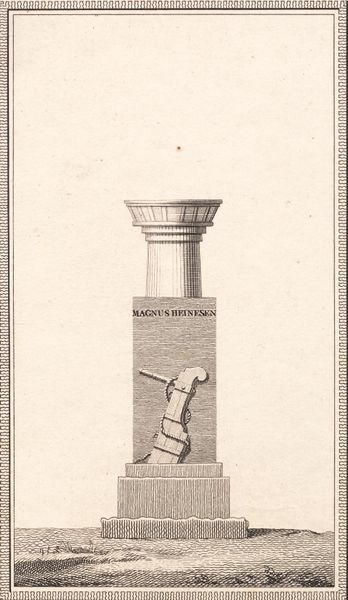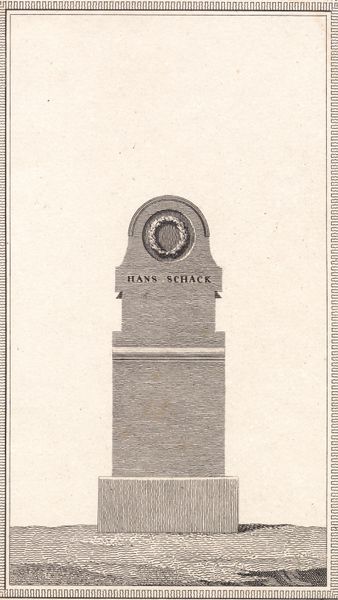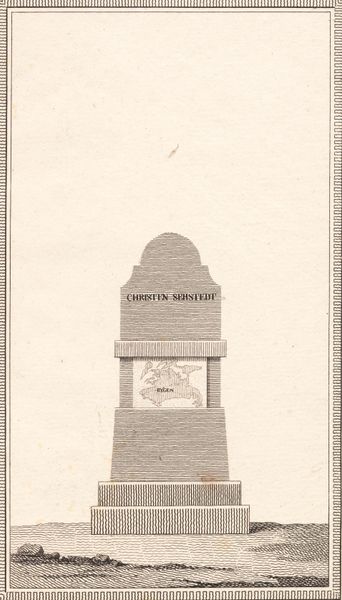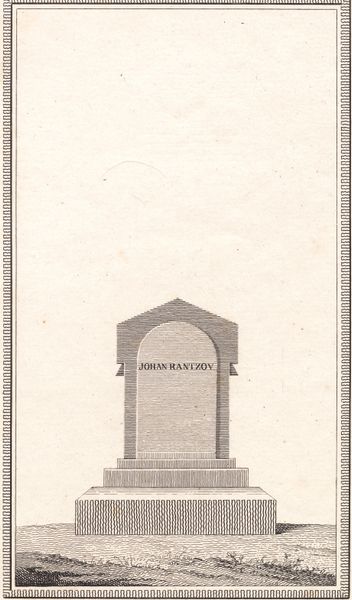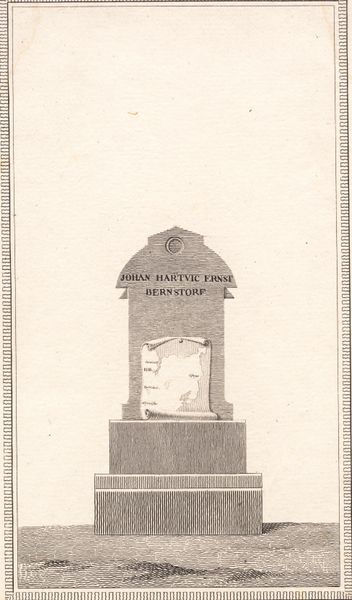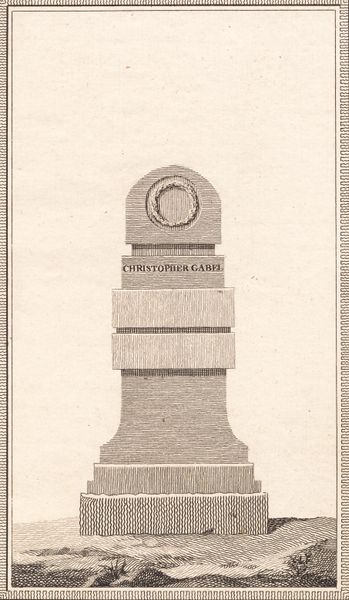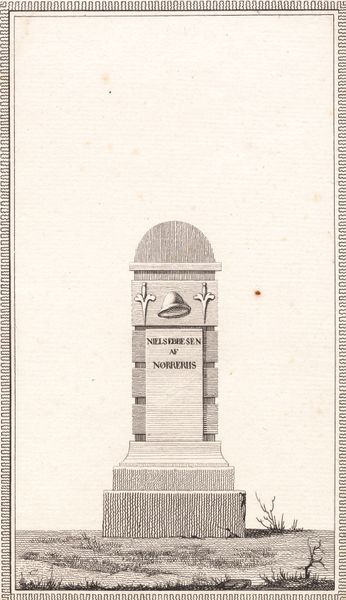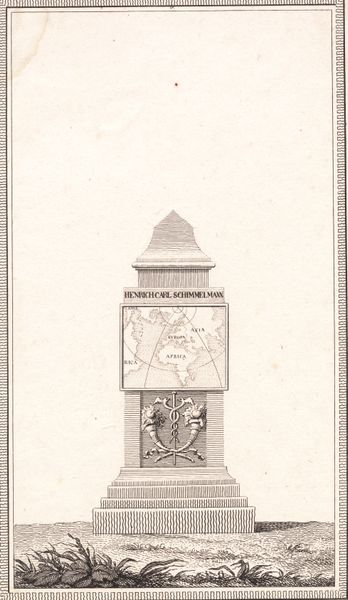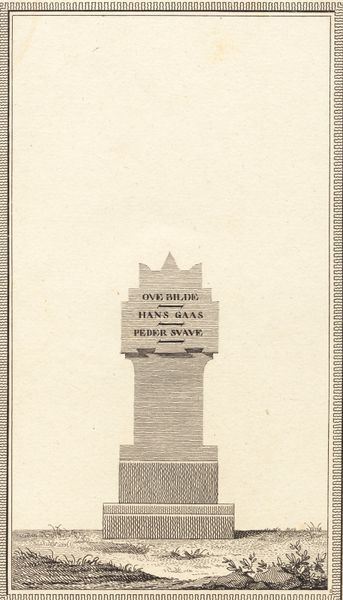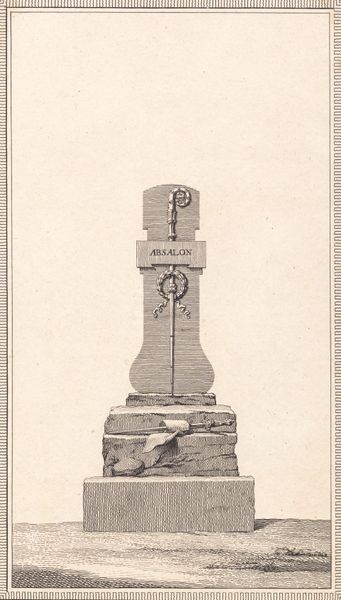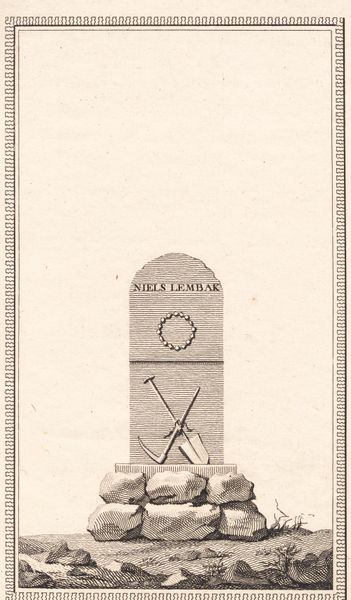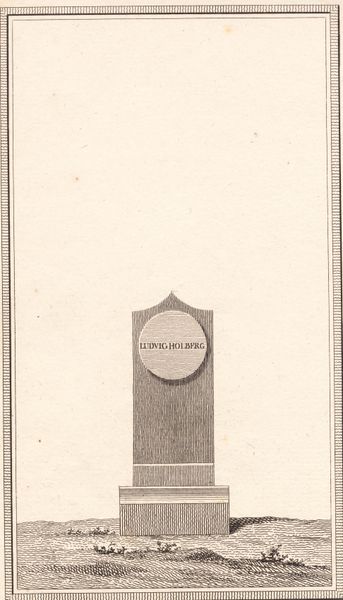
print, etching, engraving
#
portrait
#
neoclacissism
# print
#
etching
#
engraving
Dimensions: 178 mm (height) x 103 mm (width) (billedmaal)
Curator: Here we have J.F. Clemens' print, "Hans Rostgaard og hans hustru", completed between 1779 and 1781. Editor: Well, my first impression is of stark solemnity. It's an engraving, isn't it? That rigid structure in the middle... is it a tombstone or a memorial? There’s an almost unsettling austerity to it. Curator: Yes, it’s an etching and engraving. Observe how Clemens employs line and form, creating a neoclassical monument to Hans Rostgaard and his wife. There’s a powerful emphasis on idealized forms and balance, reflecting the Enlightenment values. Editor: The starkness really draws my eye to that wreath being held, almost offered, by two hands. It feels incredibly fragile against that imposing stone. Like life's transience against the backdrop of enduring stone. What is your perception about that wreath? Curator: Absolutely! That wreath signifies cyclicality, the eternal return—life, death, and rebirth. It’s tendered, just as you suggest. Its precarious position, though, evokes the ephemeral quality of human existence. Clemens uses the monument and the delicate wreath to highlight tensions between permanence and temporality. Editor: Interesting. I’m drawn to the texture created by the engraving and etching. It gives the stone a tangible feel, yet flattens the overall picture into a field of stark verticals. Curator: You're correct, and it is interesting that Clemens chose this approach, in line with Neoclassical artistic goals, as they were invested in an illusion of simple structure. Consider how he plays with line and texture to enhance a sense of depth, without straying far from a flat visual experience. Editor: It's such an interesting juxtaposition—almost chillingly sterile, yet intensely evocative. You leave me pondering the grand monument that encapsulates something as simple as human presence, represented by that lone hanging wreath, in its time both delicate and powerful. Curator: It reminds us how historical memory and enduring objects prompt us to examine life's beauty and shortness. It's quite stunning, isn't it?
Comments
No comments
Be the first to comment and join the conversation on the ultimate creative platform.
